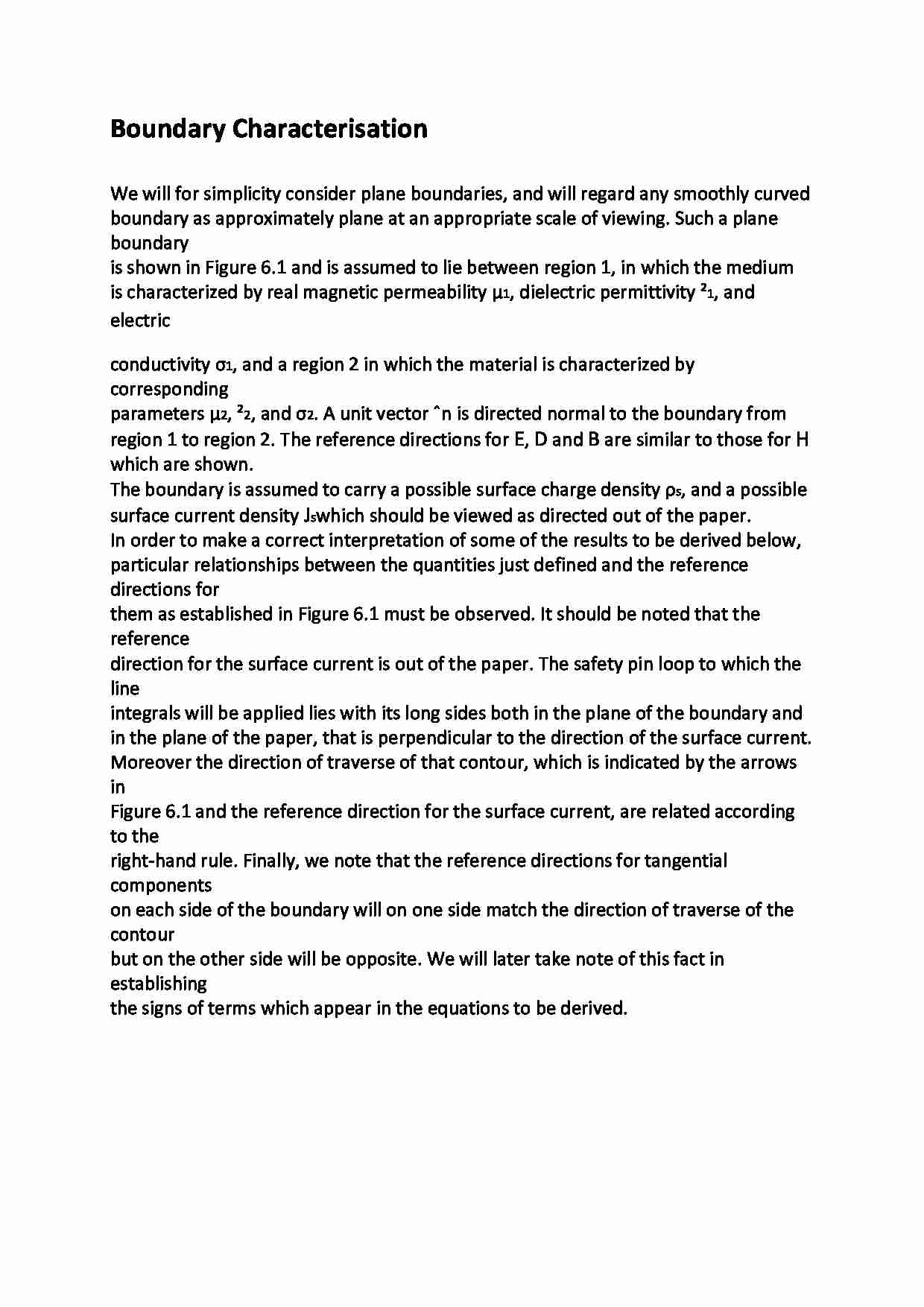
Boundary Characterisation We will for simplicity consider plane boundaries, and will regard any smoothly curved
boundary as approximately plane at an appropriate scale of viewing. Such a plane boundary
is shown in Figure 6.1 and is assumed to lie between region 1, in which the medium
is characterized by real magnetic permeability μ1, dielectric permittivity ²1, and electric
conductivity σ1, and a region 2 in which the material is characterized by corresponding
parameters μ2, ²2, and σ2. A unit vector ˆn is directed normal to the boundary from
region 1 to region 2. The reference directions for E, D and B are similar to those for H
which are shown.
The boundary is assumed to carry a possible surface charge density ρs, and a possible
surface current density Js which should be viewed as directed out of the paper.
In order to make a correct interpretation of some of the results to be derived below,
particular relationships between the quantities just defined and the reference directions for
them as established in Figure 6.1 must be observed. It should be noted that the reference
direction for the surface current is out of the paper. The safety pin loop to which the line
integrals will be applied lies with its long sides both in the plane of the boundary and
in the plane of the paper, that is perpendicular to the direction of the surface current.
Moreover the direction of traverse of that contour, which is indicated by the arrows in
Figure 6.1 and the reference direction for the surface current, are related according to the
right-hand rule. Finally, we note that the reference directions for tangential components
on each side of the boundary will on one side match the direction of traverse of the contour
but on the other side will be opposite. We will later take note of this fact in establishing
the signs of terms which appear in the equations to be derived.
... zobacz całą notatkę



Komentarze użytkowników (0)